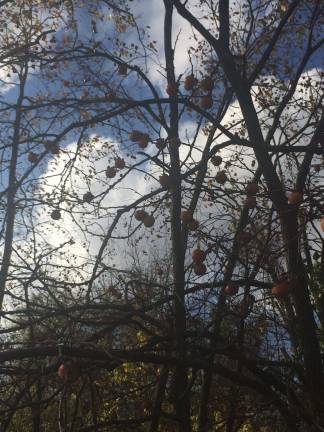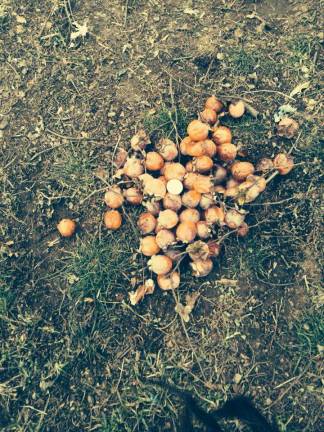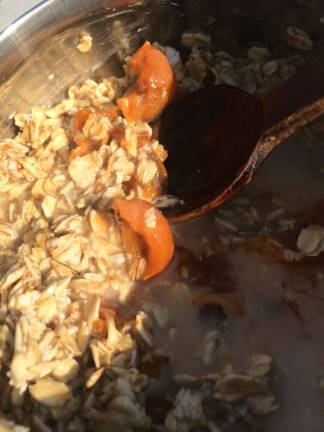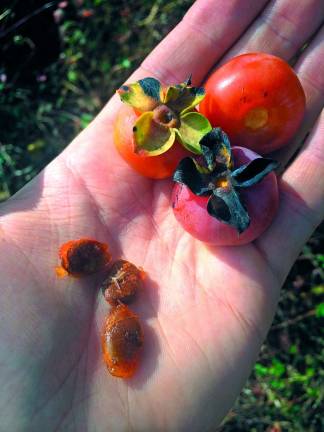Sweet as cotton candy





While Asian persimmon is commonly found in grocery stores, its wild American counterpart goes virtually ignored. Why? When unripe, the American persimmon is extremely astringent and will pucker your whole mouth like you just tried to eat sandpaper, and I suspect many have tried and been shocked by their foraging experiment. This action is due to tannic acid (same as in acorns), which can be profoundly helpful in cases where astringency is needed, but doesn’t taste so great. However, after the American persimmon ripens it is sweet as cotton candy; much sweeter, in fact, than Asian persimmons.
The other issue is that ripe persimmons are soft and mushy, somewhat unpleasant looking to those who expect grocery store perfection. For them to go soft, they usually require a few weeks of cold conditions which “blets” them. They are ready when you can pop off the top, which is called the calyx.
This kind of plant tracking and watching requires awareness, as well as harvesting and processing skills once commonly known, but now almost lost to a corporate food system mentality.
I think of persimmons as a date replacement, which can be eaten right off the tree or added to any dish to sweeten it. One of my favorite ways to eat them is to mash them and add them to oatmeal, letting the oats and persimmons soak overnight. Their sweetness makes even plain oats delicious, no other sweetener required.
Look for persimmons along hedgerows and old farmsteads. They are easier to find in the fall [winter?] when the leaves have dropped but some persimmons are still holding on to the tree (shake carefully). Consider that they grow along hedgerows because back when most of these trees were born, planting fruit trees on your property wasn’t trendy; it was common sense. Dan De Lion